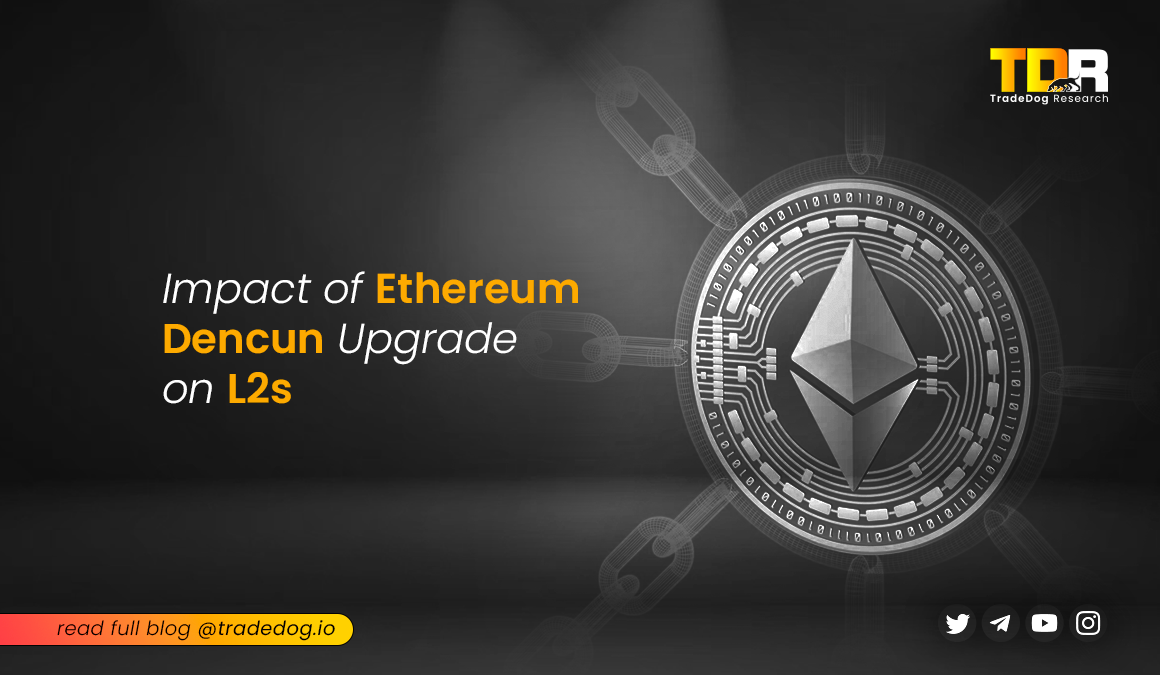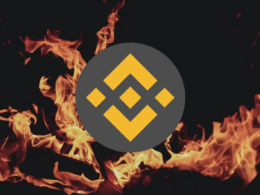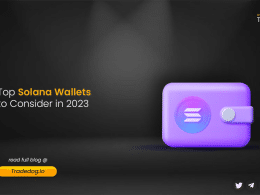Quick Links
The Dencun upgrade went live on Ethereum on 13th March 2024 at 9.55 AM ET. This attracted new users, with a record 4.6 million weekly active users on Ethereum L2s. The Ethereum Dencun Upgrade is set to introduce the Proto Dank Sharding technique, which will segment the network into blobs, aiming to enhance Ethereum’s efficiency, reduce transaction costs on L2s and scale Ethereum to >100,000 transactions per second.
What Exactly is Dencun Upgrade?
A key focus of the Dencun Upgrade involves Dank Sharding and Proto Dank Sharding, which are aimed at scaling Ethereum Layer 2s and enhancing its efficiency.
Dank Sharding: The Ethereum blockchain will be divided into smaller sections called “blobs.” This division, known as danksharding, is part of an upgrade aimed at boosting the Ethereum network’s capacity and lowering transaction fees. By breaking it down into smaller parts, transactions, and smart contracts can be processed simultaneously, making the network faster and more efficient overall.
Proto Dank Sharding: Proto Dank Sharding expands upon this idea by introducing an extra storage room for data within each blob. This expanded capacity enables the accommodation of a greater volume of information, including transaction data, smart contract code, and related metadata. By enhancing storage capabilities, Proto Dank Sharding facilitates the more efficient management of larger data volumes within each blob.
The introduction of blobs within Dank Sharding and Proto Dank Sharding offers a framework for the Ethereum blockchain that is both more efficient and scalable.
How is Dencun Upgrade helping L2s?
- With the Dencun upgrade going live we have seen Layer 2s getting supercharged. Before, Layer 2 solutions had to use calldata to consolidate transaction details when confirming their L2 transactions to L1.
- Using calldata for this purpose wasn’t its original intention and had many limitations, resulting in high costs. Blobs, specially crafted data containers for Layer 2 solutions, differ from calldata.
- The majority of blob data is kept off-chain, with only crucial information, like unique IDs, cryptographic proofs, and interpretation rules, stored on-chain. This approach ensures data security while significantly cutting costs for L2 operations.
- As a result, blobs have resulted in significant cost savings within L2 ecosystems and offer a more scalable means for L2s to engage with L1.
On Chain Metrics :
To initiate our analysis, let’s delve into the aftermath of the Dencun upgrade on Layer 2 fees:
- After the Dencun upgrade on March 13th, we have observed a noticeable decrease in fees across various Layer 2 networks. Concurrently, there has been a surge in fees on the Base chain for a few days, a trend we will delve into shortly.
- Comparing transaction fees before and after the Dencun upgrade unveils a substantial decrease of over 90%.
- As of April 1st, 2024, the Median gas fee of Artbitrium witnessed a decline from $0.544 to $0.040, alongside Base median gas fee adjusting from 0.396 to 0.050, and Optimism median gas fee decreasing from 0.556 to 0.055. This underscores the impact of the Dencun upgrade.
Let’s now analyze the current hot topic in the Web3 market: the Base chain. But before we do that, let’s understand why there’s been a spike in fees.
- Coinbase’s layer 2 network, Base, experienced a surge in fee revenue on March 19 due to increased activity from memecoin traders. On March 19, Base generated $1.67 million in fee revenue, the highest in a single day since its launch.
- Memecoins like TOSHI and BRETT gained popularity among traders, with BRETT considering itself the best friend of PEPE, a memecoin with a high valuation on the Ethereum mainnet.
- Memecoin traders often use bots to execute their strategies, willing to pay high gas fees to secure trades early through “sniping.” Sniping involves using bots programmed on Telegram to buy newly launched joke cryptocurrencies immediately, leading to gas wars among bots.
- Traders engaging in arbitrage strategies prioritize profit over gas costs, exploiting price discrepancies across different markets to make money.
- Ethereum’s Dencun upgrade led to lower fees across layer 2 networks, including Base, which initially saw a 99.9% reduction in transaction fees from Ethereum. However, congestion issues persisted due to high demand.
- Following the Dencun upgrade, Base experienced a significant increase in transaction volume and active users. The seven-day average for transactions rose from around 470,000 to 1.4 million, while active users surged from 96,000 to 310,000.
- Base generated nearly $60 million in volume over three days in August, with $1.6 million in fee revenue in its first two weeks. Recent activity on March 19 surpassed these figures.
Closing Thoughts
Overall, the launch of the Dencun upgrade has significantly reduced transaction fees, boosting activity on Layer 2s. While congestion remains a concern, the Ethereum team’s approach to addressing it will be crucial. Vitalik Buterin, Ethereum’s founder, has noted a shift towards enhancing Ethereum’s capabilities and scaling from an established baseline to new heights. Buterin said that despite these strides, ongoing scaling efforts are emphasized, particularly in optimizing rollups and introducing data availability sampling (DAS) like PeerDAS to further enhance scalability and decentralization. Additionally, Buterin underscores the need for improvement in layer-2 solutions, including data compression, Plasma integration, execution constraints, and code reliability, highlighting Ethereum’s evolution as a comprehensive replacement for centralized technologies.









